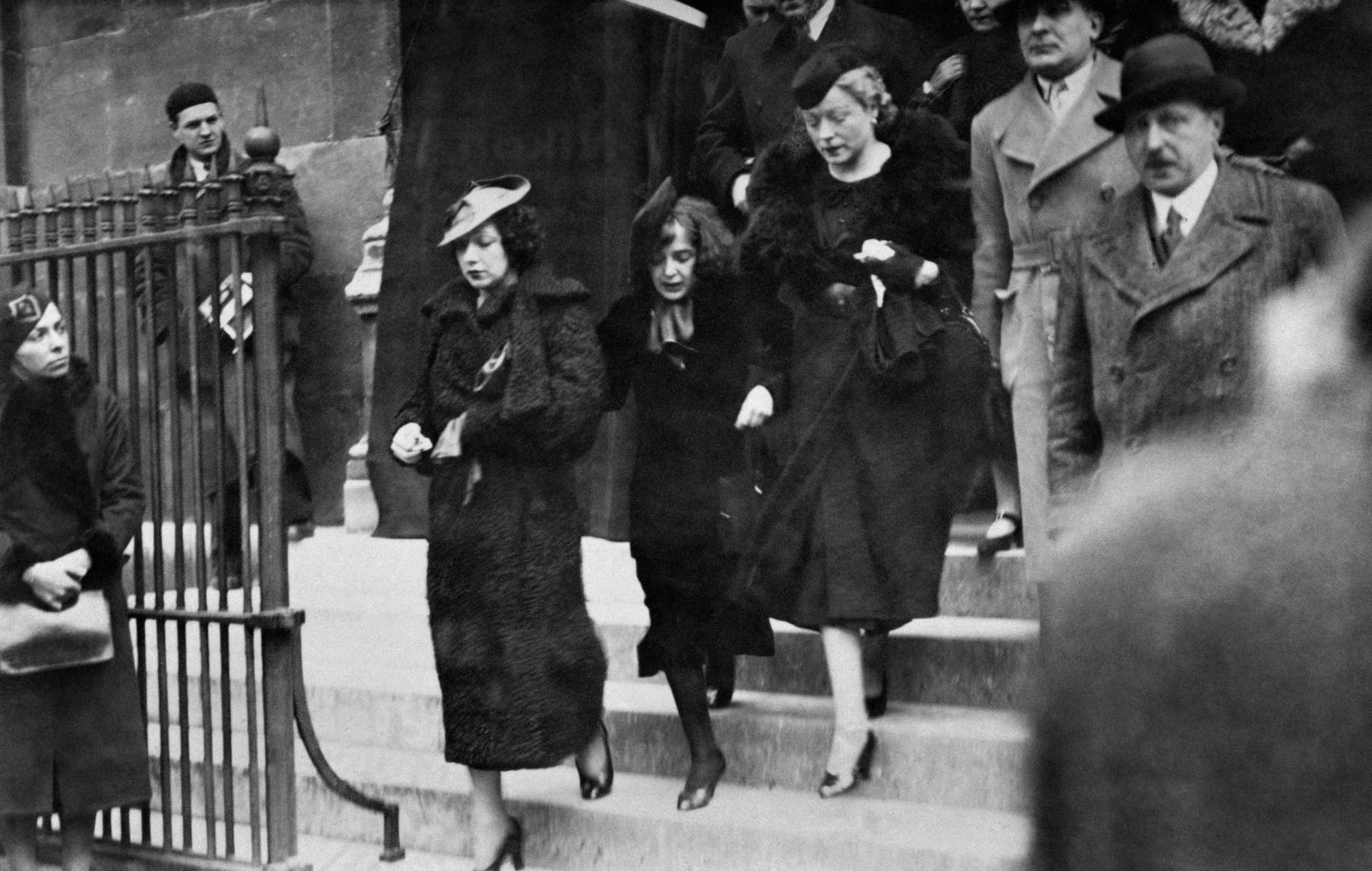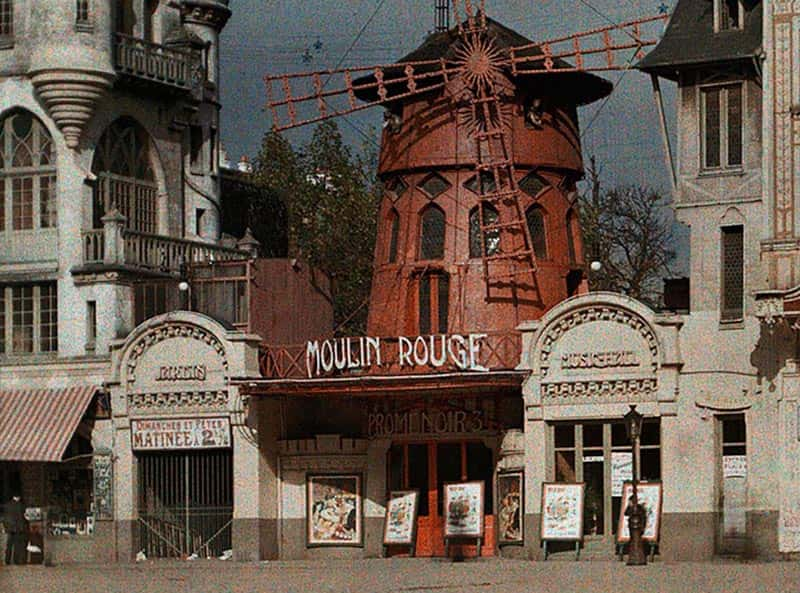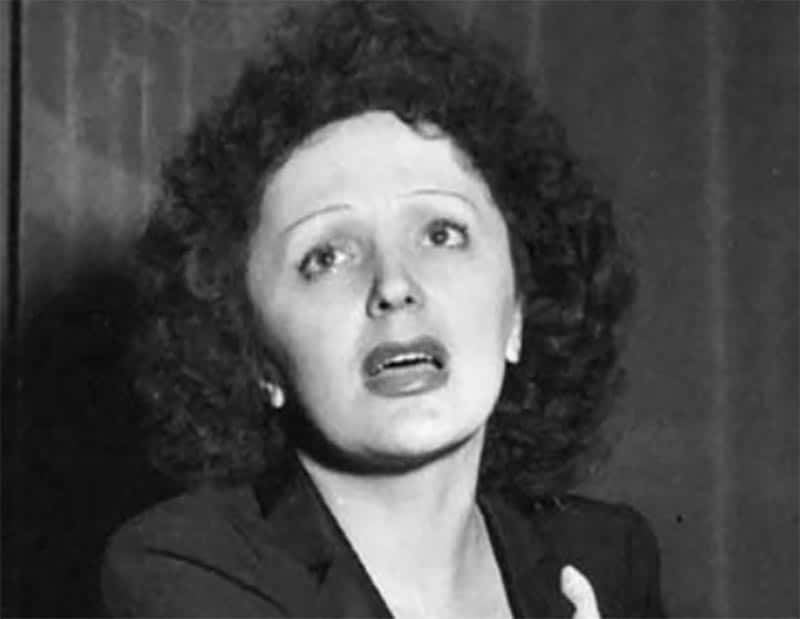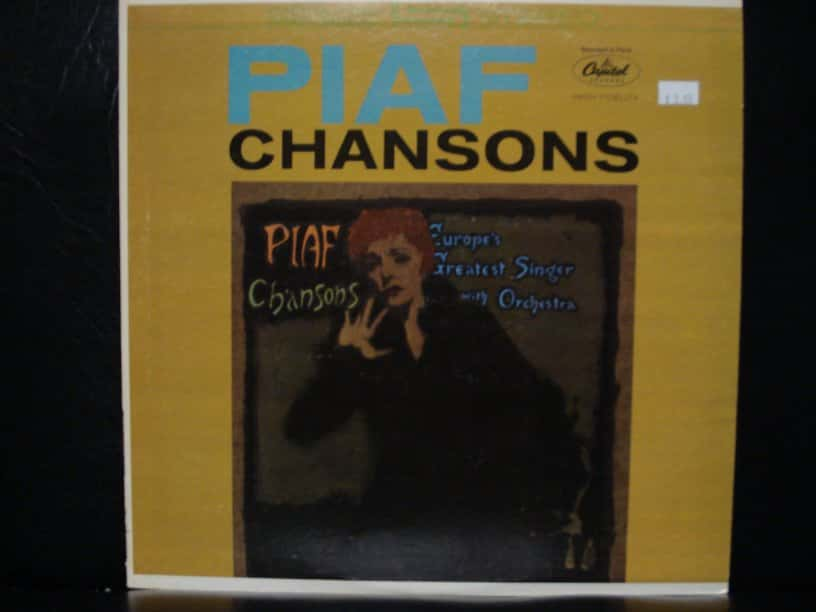Edith Piaf, The Tragic Songbird
When the love of her life died in a tragic accident, Edith Piaf spun wildly out of control—and the consequences were absolutely devastating.

1. She Had Another Story
From the very beginning, Edith Piaf knew how to make a dramatic entrance. Although her birth certificate said she was born at the Hospital Tenon in Paris, she had a different story to dtell. On December 19, 1915, Edith claimed that her mother—Annetta Maillard—never made it to the hospital. With a no-show ambulance, Maillard delivered her on the front steps of their home at 72 Rue de Belleville. And her story only got more dramatic from there…

2. She Shared Her Name With A Tragic Hero
Piaf’s parents named her with courage in mind. Her name—Edith—comes from a British WWI nurse named Edith Cavell who risked her life for the sake of French troopers. After rescuing them from the Germans, Cavell faced a death sentence. They executed her only two months before Piaf’s birth. While both women led wildly different lives, they had many things in common. Later in life, Piaf also risked her life in a similar act of heroism.
3. She Was Abandoned
Some say there’s no love as unconditional as a mother’s love for her child. That is, unless your mother is Edith Piaf’s. Sadly, Piaf’s mother wanted nothing to do with her and abandoned her at birth. For some of her childhood, she lived with her maternal grandmother, but in the end, she belonged to her father. And with WWI raging on, he had a difficult decision to make.
4. Like Father, Like Daughter
Piaf’s father—Louis Alphonse Gassion—was an acrobat with a theatrical past. He was a street performer hailing from Normandy, and as time would tell, these dramatic affinities one day blossomed in his own daughter. But in 1916, he had WWI to consider, and when he enlisted, he had no choice but to leave Piaf in the care of his mother—a woman with quite the shocking occupation.
5. She Lived With Working Girls
In Bernay, Normandy, Piaf’s grandmother welcomed the girl into her scandalous life. She ran a bordello—or what some called "a house of ill repute". When Piaf's father went off to fight, he left his baby girl there. Some say it takes a village to raise a child, but it only took a house full of her grandmother’s "employees" to raise Edith. These resilient women became her family and their influence shaped her as a woman.
That being said, she had to grow up quickly—perhaps a little too quickly.
6. She Couldn’t Say "No"
With her turbulent romantic history, it’s no wonder Edith Piaf insists that her life growing up in the bordello influenced her weakness for men. For one, the importance of consent was woefully skewed for Piaf. She once reminisced, saying, "I thought when a boy called a girl, the girl would never refuse". But as a child, Piaf’s physical illnesses fully eclipsed the negative influences of the bordello’s clientele.
7. She Went Blind
During a chapter of her childhood, Edith Piaf couldn’t see at all. She suffered from keratitis—an inflammatory condition that affects the cornea of the eye. Her blindness woke pity in the hearts of her grandmother and the other girls. Together, they decided to pool money in an effort to find a cure for Piaf’s unfortunate condition. But sadly, the money never found its way into the hands of a legitimate doctor.
 Piaf: The Early Years (1974), AMLF
Piaf: The Early Years (1974), AMLF
8. She Experienced A Miracle
The proposed cure for young Piaf’s blindness was…unconventional, to say the least. The money for Piaf’s eyes went toward a very special pilgrimage—a spiritual journey in the name of Saint Thérèse of Lisieux. When Piaf’s eyesight saw considerable improvement, everyone around her believed that this healing was a downright miracle.
With her sight gratefully returned, new possibilities unfolded before her. She could see, but beyond that, she wanted to be seen.

History's most fascinating stories and darkest secrets, delivered to your inbox daily.
9. She Took To The Street
At the age of 14, Edith Piaf was ready to start making some money. After returning from battle, her father went back to his acrobatic profession. Finally old enough to earn her keep, Piaf and her father began trudging the streets together, setting up shop on corners and performing for the everyday masses. Her songbird voice rang true through the city air and unveiled unbridled potential. It was the beginning of a brand-new chapter.
 Piaf: The Early Years (1974), AMLF
Piaf: The Early Years (1974), AMLF
10. She Met A Long-Lost Relative
Only a year into performing, Piaf met a very important person—her sister. Or to be more accurate, her half-sister, Simone "Momone" Berteaut. So little is known about Momone that some say that there’s a possibility that she wasn’t Piaf’s sister at all. Either way, they became soul sisters in the end. Momone joined Piaf on the street, and together, they forged a deep connection, becoming an impressive duo in their own right.
 La Vie En Rose (2007), Légende Films
La Vie En Rose (2007), Légende Films
11. She Got Out
Together, Piaf and Momone made money singing, but additionally, Piaf performed in an acrobatic trio. With these two money-making gigs, she saved enough to move out of the bordello and into a room at the Grand Hôtel de Clermont. For a while, this arrangement worked beautifully—the two sisters relishing in their newfound independence and entertaining citizens in Paris suburbs. But this bliss was short-lived.
12. She Fell In Love
Nothing disrupts a friendship like the taste of first love. In 1932, Piaf fell in love with Louis Dupont, and soon after, he moved in with the two sisters. Both Dupont and Momone nursed a deep animosity for one another, and their living arrangement became increasingly tense. For one, Dupont didn’t approve of Piaf’s unstable line of work and kept trying to find her something more suitable. But when it came to her career, it was Piaf and Piaf alone who held the reigns.
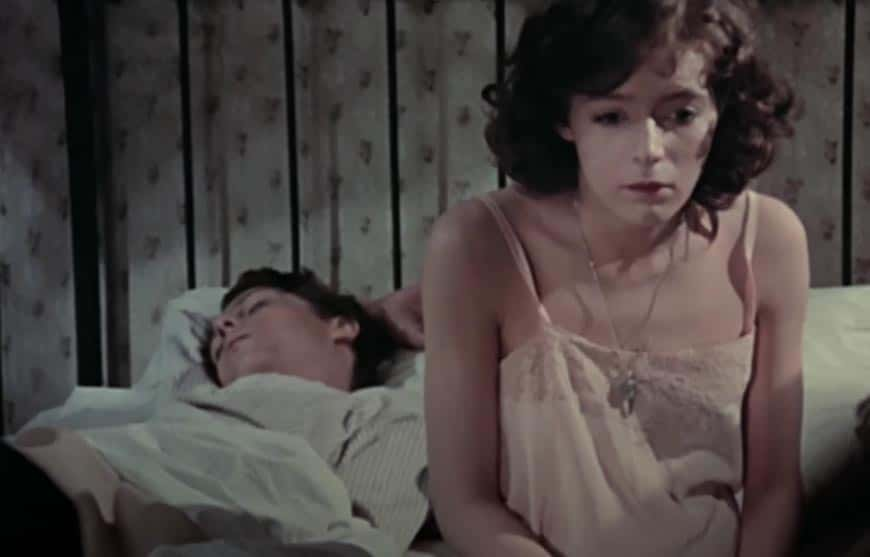 Piaf: The Early Years (1974), AMLF
Piaf: The Early Years (1974), AMLF
13. She Gave It Up
Edith Piaf persisted with performing until she was faced with a shocking life change. She was pregnant. Putting her pending motherhood first, she sadly conceded to Dupont’s suggestions and gave up singing to make wreaths in a factory. Finally, in February 1933, 17-year-old Piaf gave birth to a beautiful baby girl—Marcelle.
But the young girl was in for a rude awakening—motherhood wasn’t everything she hoped it would be.
 Piaf: The Early Years (1974), AMLF
Piaf: The Early Years (1974), AMLF
14. She Resented Her Daughter
Still a child in her own right, Piaf had no idea how to rear a child, nor was she much interested in doing so. Singing proved far more interesting than a baby and she couldn’t wait to be back on the streets. Dupont detested Piaf’s selfishness and apathy toward Marcelle. During a heated quarrel over her irresponsible behavior, Piaf made a rash decision.
She left him. She and Momone took the child and moved out. But Dupont wasn’t about to let her get away with it.
 Piaf: The Early Years (1974), AMLF
Piaf: The Early Years (1974), AMLF
15. She Sang Their Songs
Piaf and Momone frequented the red-light district of Paris—Pigalle, and it was there that she found a job singing at a lesbian club called Lulu’s. Her audience of struggling delinquents reminded her of the family she had growing up. These were her people and they related to her repertoire of songs that spoke to their common struggles—her chansons réalistes.
These supposed lowlifes had far more in common with her than the baby girl waiting for her at home.
 La Vie En Rose (2007), Légende Films
La Vie En Rose (2007), Légende Films
16. She Put Her In Danger
Piaf’s and Momone’s new lodging was at the Hôtel Au Clair de Lune, where her neglectful attitude toward Marcelle continued. Distressingly, she often left the infant alone in the apartment for most of the day whilst she and Momone went out to perform. Finally, Dupont came to his daughter’s rescue and whisked her away. He beseeched Piaf to come home and made a chilling ultimatum.
He told her that if she didn’t come with him, she would never see her daughter again.
 Piaf: The Early Years (1974), AMLF
Piaf: The Early Years (1974), AMLF
17. She Was Selfish
In a twisted echo of her own mother’s choice, Edith Piaf left her daughter behind. Although she kept up with her childcare expenses, she ultimately chose her own needs over her daughter’s. But the sad story doesn’t end there. Shortly after, Marcelle succumbed to meningitis. She was only two years old.
18. She Caught A Break
In the wake of her daughter’s passing, Piaf soared. In 1935, Louis Leplée—a prolific nightclub owner—discovered her. Used to singing on the informal stage of Parisian street corners and for Lulu’s riffraff, Piaf feared the spotlight at Le Gerny’s, Leplée’s club. The people were different here—wealthier and hailing from far greater privilege than she had ever known. But there was also a darker side to it all.
Many of his patrons had mob connections, and that could be downright terrifying. Luckily, Leplée stepped in to fill a father-figure role she desperately needed.
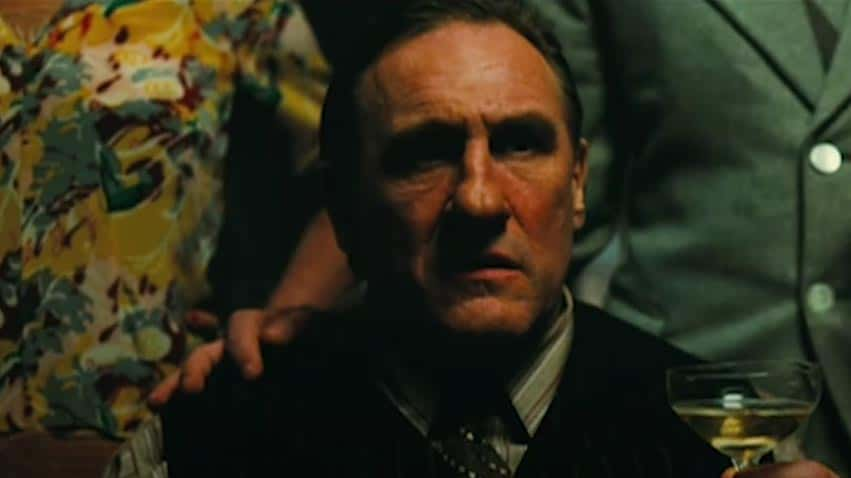 La Vie En Rose (2007), Légende Films
La Vie En Rose (2007), Légende Films
19. She Trusted Him
Piaf’s black dress was her signature look, but it was Leplée who took her out shopping and helped her pick it out. And his grooming expertise didn’t stop there. For one, Edith Piaf was never her given name. In fact, she was born Edith Gassion. But when she met Leplée, everything changed. He saw her potential weaknesses and transformed them into her greatest strengths.
 La Vie En Rose (2007), Légende Films
La Vie En Rose (2007), Légende Films
20. She Was Small
Piaf was only a slip of a thing—standing at 4’8" tall—and her small stature barely contained her powerhouse voice. Thus, it was Leplée that named her Piaf—French slang for "little sparrow" or "bird". He saw her as a songbird and so would everyone else. He dedicated himself to her ad campaign in the weeks leading up to her opening performance.
Leplée believed in her wholeheartedly, and his devoted efforts were about to pay off.
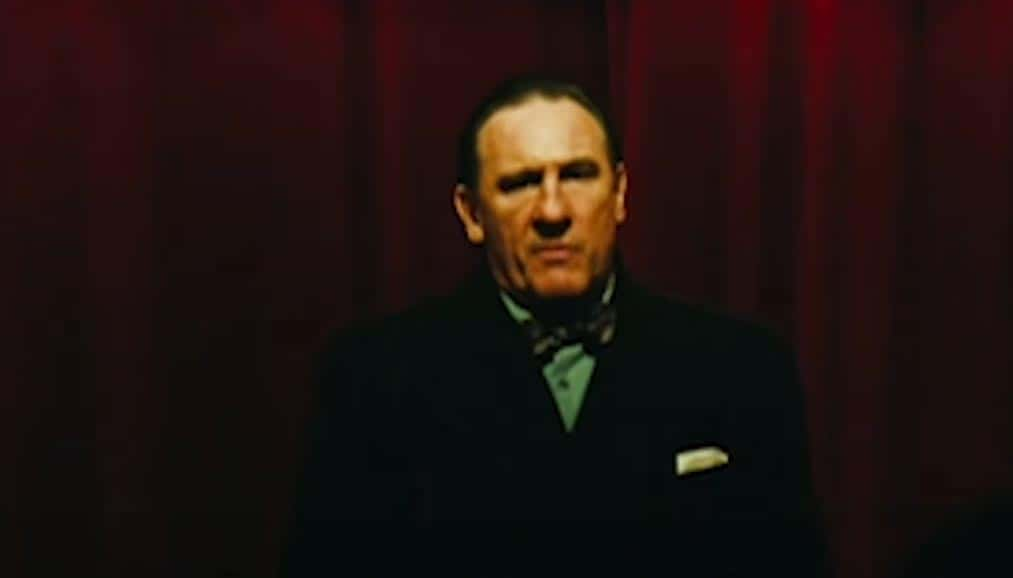 La Vie En Rose (2007), Légende Films
La Vie En Rose (2007), Légende Films
21. She Bared All
As a result of Leplée’s work, Piaf’s opening night was a runaway success. The hype surrounding her debut attracted important celebrities such as Maurice Chevalier. The pressure was high, and all eyes were on her. With lights low and her spotlight illuminated, Piaf began to sing. Every shred of herself went into her performance, every pain laid bare. This vulnerability had an incomparable effect on her audiences—they couldn’t look away.
 Piaf: The Early Years (1974), AMLF
Piaf: The Early Years (1974), AMLF
22. She Took Flight
As a result of her nightclub gigs, Piaf’s career took off. Shortly after, she had the opportunity to sing in a movie. She also recorded two albums and met one of her greatest collaborators—composer Marguerite Monnot. But this chapter of happiness was terribly brief. With dangerous ties to the mob circuit, Piaf’s fortune hung in the balance. Disaster lay waiting.
23. She Almost Lost It
In a single moment, Edith Piaf’s life came crashing down around her. In 1936, mobsters executed her friend, de facto manager, and champion, Louis Leplée. Caught in the middle, Piaf became a suspect. Questioned and accused, she managed to escape any charges. But the sorry event had already inflicted a world’s worth of damage.
All the negative press and attention threatened to destroy her career. But Piaf was savvy. She wasn’t about to go down without a fight.
24. She Saved Herself
In order to save her image, Piaf hired Raymond Asso, a French lyricist poised to get her on the straight and narrow. He saw potential in her nickname, "Piaf", and decided to make it her official stage name—Edith Piaf. In addition, he kept all her naughty acquaintances at bay by refusing to let her associate with them. The cherry on top?
He commissioned songs about her sad history—a history her audiences obsessed over.
 Piaf: The Early Years (1974), AMLF
Piaf: The Early Years (1974), AMLF
25. She Changed At His Bequest
Asso was more than just a hired hand. In fact, he ended up living with Piaf for two years as her lover. But there was a terrifying dark side to their relationship. Above all, Asso relished in his ability to control her and make her more palatable. According to Piaf’s biographer Carolyn Burke, "Asso saw himself as Edith’s dompteur—the tamer who breaks a wild creature of its need to scratch and bite".
Needless to say, this attachment wasn’t meant to last. Especially once Piaf had the public eating out of the palm of her hand.
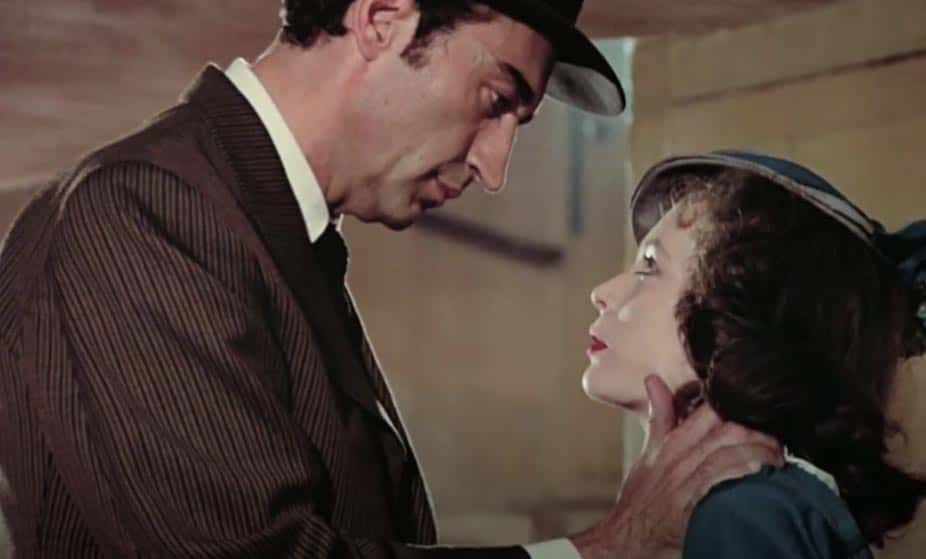 Piaf: The Early Years (1974), AMLF
Piaf: The Early Years (1974), AMLF
26. She Crossed The Ocean
In the late 1930s, Piaf rose up through France’s musical ranks, and soon, she performed at the highest tier. She even crossed borders—her voice streaming through radio waves and out onto American soil—charming fans both abroad and close to home. But behind the scenes, Piaf chafed against the expectations of the people.
 La Vie En Rose (2007), Légende Films
La Vie En Rose (2007), Légende Films
27. She Had A Singular Desire
Unsatisfied with continuing her pity-party narrative, Piaf longed to break away and sing more mainstream songs for the masses. But the masses didn’t love her for her mainstream songs, they loved her for her tragedy. And that’s exactly what she gave them. It wasn’t until years later that a rare personal accolade came to fruition—the unforgettable, yet commercial single "La Vie En Rose". The song enchanted its listeners and remains a classic to this day.
28. She Was A Networking Pro
WWII couldn’t slow Piaf down. She took advantage of this period to capitalize on her networking skills, rubbing shoulders with important figures such as Chevalier and poet Jacques Bourgeat. It was a moment for collaboration and creativity. She doubled down on her work, writing lyrics and readying new songs for her growing repertoire.
With so much experience under her belt, she had a unique wisdom that other artists yearned for.
29. She Was A Teacher
Edith Piaf became France’s most sought-after entertainer, and as such, other singers sought her out for mentoring and advice. Her interludes with the next generation of musicians included future stars such Léo Ferré, Charles Aznavour, and Yves Montand. Montand in particular struck a special chord in Piaf. He made as much of an impression on her as she did on him...especially behind closed doors.
30. She Frequented The Moulin Rouge
In the spring of 1944, Piaf and Montand embarked on a business collaboration turned love affair in the legendary Moulin Rouge—a dreamland cabaret, and the perfect setting for a burning romance. During this time, she became a revolutionary force for the cabaret genre. Known for her passion, she recognized love as the greatest strength behind her music and voice. And Montand reaped the benefits in more ways than one.
31. She Made Him Great
Only three years later, she wrote the lyrics to one of Montand’s greatest hits—"Mais qu’est-ce que j’ai?" Almost instantaneously, his popularity skyrocketed and by the end of the year, he was one of the most famous celebrities in France. But what goes up must come down. It seemed as if their combined greatness was too much for their romance to survive.
As such, this power couple called it quits once Montand gained almost as much notoriety as his great counterpart. But Piaf bounced back quickly…
32. She Met Her Greatest Love
In the summer of 1948, Piaf met the love of her life—Marcel Cerdan—a professional boxer. But despite their undeniable chemistry, there remained a single caveat—and it was a doozy. Cerdan was a married man with three children. This didn’t faze Piaf enough to end their passionate affair. Even so, their romance ceased less than a year later.
Nobody could have foreseen its tragic ending, nor the regret that followed Piaf to the end of her days.
 Edith and Marcel (1983), Parafrance Films
Edith and Marcel (1983), Parafrance Films
33. She Needed To Be With Him
Marcel Cerdan had a full-fledged fear of flying, but he also loved Edith Piaf dearly. In the autumn of 1949, Piaf practically begged Cerdan to visit her in New York, and in the end, his devotion to her trumped his reservations. After all, the distance was difficult for them both. But in a bizarre turn of events, Cerdan’s fears became a nightmarish reality.
His plane fell from the sky, crashing mid-course, and taking every life on board.
34. She Had Regrets
When Piaf heard the news of Cerdan and the fatal plane crash, she broke down. The love of her life was gone, and with that came crashing waves of guilt—she felt completely responsible. She was the sole reason Cerdan was on the plane in the first place. One simple decision changed her life, and perhaps her happiness, forever.
 La Vie En Rose (2007), Légende Films
La Vie En Rose (2007), Légende Films
35. She Collapsed
Only a night after the crash, Piaf held her head high and tried to get through one of her concerts. But no amount of bright lights and adoring applause could ease the pain of loss. Burdened by the sheer weight of her grief, she collapsed multiple times mid-performance. The show ended with her being helped off stage, still reeling. And there was only one way for her to medicate her broken heart.
 La Vie En Rose (2007), Légende Films
La Vie En Rose (2007), Légende Films
36. She Almost Perished
To cope with the loss, Piaf turned to illicit substances and drink, which only fueled her deep depression. To make matters worse, two years later, another tragedy struck. She suffered serious injuries in a car crash—a broken arm and two ribs. Now she had the physical pain to match the emotional scars. Her resulting dependency on morphine and drink eventually devolved into a full-fledged addiction. But that wasn’t all.
 La Vie En Rose (2007), Légende Films
La Vie En Rose (2007), Légende Films
37. She Turned To Addiction
In an unlucky series of accidents, Piaf endured two more near-fatal car crashes that further wrecked her already battered body. With three failed attempts at rehabilitation, Piaf’s personal life was in tatters. Despite her misfortunes, Piaf still had love on the brain. And there was one man in particular that had the power to inspire her with hopes of healing and recuperation.
38. She Wrote Him Letters
Piaf’s little-known romance with speed-racing cyclist Louis Gérardin became public knowledge in a series of 54 steamy love letters written from 1951 to 1952. For Piaf, the most desirable quality of Gérardin’s was his stability and strength. She truly believed that he would be the one to guide her toward sobriety. In one of her letters she writes—"I want to completely better myself, I want to be worthy of you, you must help me to transform, you will be my little professor, dear, and I will blindly listen to you like a master that I adore".
But despite her eagerness, insurmountable obstacles challenged their romance.
39. She Begged Him To Leave Her
Once again, Piaf fell for a married man. In many of her letters, she pleaded with him to leave his wife so that the two of them could plot out a normal life. The letters speak to her desperation, her passion, and above all, her hope—she even talked about having children with him. But love is a two-way street, and Gérardin didn’t quite match Piaf’s conviction in their affair.
40. She Was Exhausting
Edith Piaf wasn’t exactly low-maintenance. While her passion and enthralling talents attracted Gérardin, it wasn’t long before he realized that actually being with her was…a lot. He reportedly claimed that having to spend 48 hours with her was "more tiring than riding in the Tour de France". In the end, he made a decision that broke Piaf’s heart.
He never left his wife for her. She herself married another man before he could make any show of real devotion.
41. She Married Twice
The man Piaf married after her love letter fiasco was Jacques Pills, a French singer and actor. At their wedding, the beautiful Marlene Dietrich served as the matron of honor. But this marriage didn’t last, and she divorced him in 1957. Always seeking out the next romance, she married again in 1962. This time, the groom—Théo Sarapo— was 20 years younger than her.
He was a freshly handsome man that completely towered over her stooped frame. In some of her last performances, the two of them sang duets with one another.
42. She Was Sensational
While her love life took dramatic dips and dives throughout the 40s and 50s, her career remained strong. She even had the opportunity to expand her horizons. Her tour took her to new shores—all over Europe, South America, and the United States. In particular, her American audiences were difficult to win over. Their preconceived notion of her performances mellowed their initial reaction to the "Little Sparrow".
43. She Defied Expectation
When Edith Piaf stepped onto the American stage with her diminutive stature swathed in a simple black dress, she was not the spectacle that people expected. Their first impression was one of disappointment. However, their minds quickly changed after a glowing review in The New York Herald Tribune. After that, Piaf wiggled her way into the American mainstream, appearing on The Ed Sullivan Show eight times and performing at Carnegie Hall twice.
44. She Took On A Political Challenge
Few people knew at the time, but Edith Piaf played a pivotal role in WWII. During the German occupation of France, Piaf flourished and performed in countless bordellos and nightclubs, raking in a ton of money and affording a fancy luxury apartment. But her greatest achievement during this period was not her commercial success, but rather her tour through unoccupied Vichy France, where she visited a POW camp near Berlin. It was here that Piaf became a hero.
45. She Was A Hero
At the camp, Edith Piaf persuaded the commander to let her take photos with the inmates—but behind this gesture, the songstress had an ingenious plan. She then took these portraits and had false papers made for the prisoners, stating that they were actually free French workers in Germany. This risky move paid off, and she granted up to 300 POWs their freedom.
46. She Passed The Point Of Return
By 1959, Piaf’s health followed a downward spiral. Years of medication and drink meant to assuage her arthritis and insomnia took an even larger gouge out of her overall wellbeing. She suffered from serious ulcers and had to undergo a number of surgeries. After that, her deterioration stretched out over the next four years. Piaf reached an all-time low in 1962, and any glimmers of hope quickly faded.
47. She Wilted Away
Piaf’s liver was beyond salvation and she required frequent blood transfusions. Her weight also dipped dangerously low, to a shocking 66 pounds. Grievously, her passing was neither swift nor painless. She wilted away for months at her villa in Plascassier on the French Riviera, drifting in and out of consciousness and holding on by a thread.
Finally, at the young age of 47, Piaf succumbed to an aneurysm as a result of liver failure. The little sparrow breathed her last breath.
48. She Had A Revelation
After living a life made of difficult choices, high highs, and low lows, Edith Piaf came to her final revelation—and the last words she ever uttered were absolutely devastating. She said: "Every thing you do in this life, you have to pay for". Every sacrifice, every wrong turn, created the tragic songbird who sang to the hearts of the sorrowing people.
Her pain made her great, relatable, and oh so lovable.
49. She Inspired Thousands
The Church denied Edith Piaf a funeral mass due to her divorce, but it didn’t stop the French people from descending to the streets to pay their respects. More than 100,000 devoted fans attended her funeral procession and ceremony. And according to some accounts, it was the only time since the end of WWII that Parisian traffic came to a complete halt. Together, the nation grieved the loss of their favorite entertainer.
50. She Is A Planet
There are tombstones, there are obituaries, and then...there are planets. Soviet astronomer Lyudmila Georgievna Karachkina honored Edith Piaf by naming a planet after her. And so, 3772 Piaf exists somewhere up in the heavens, while her legacy lives on down here on earth.











